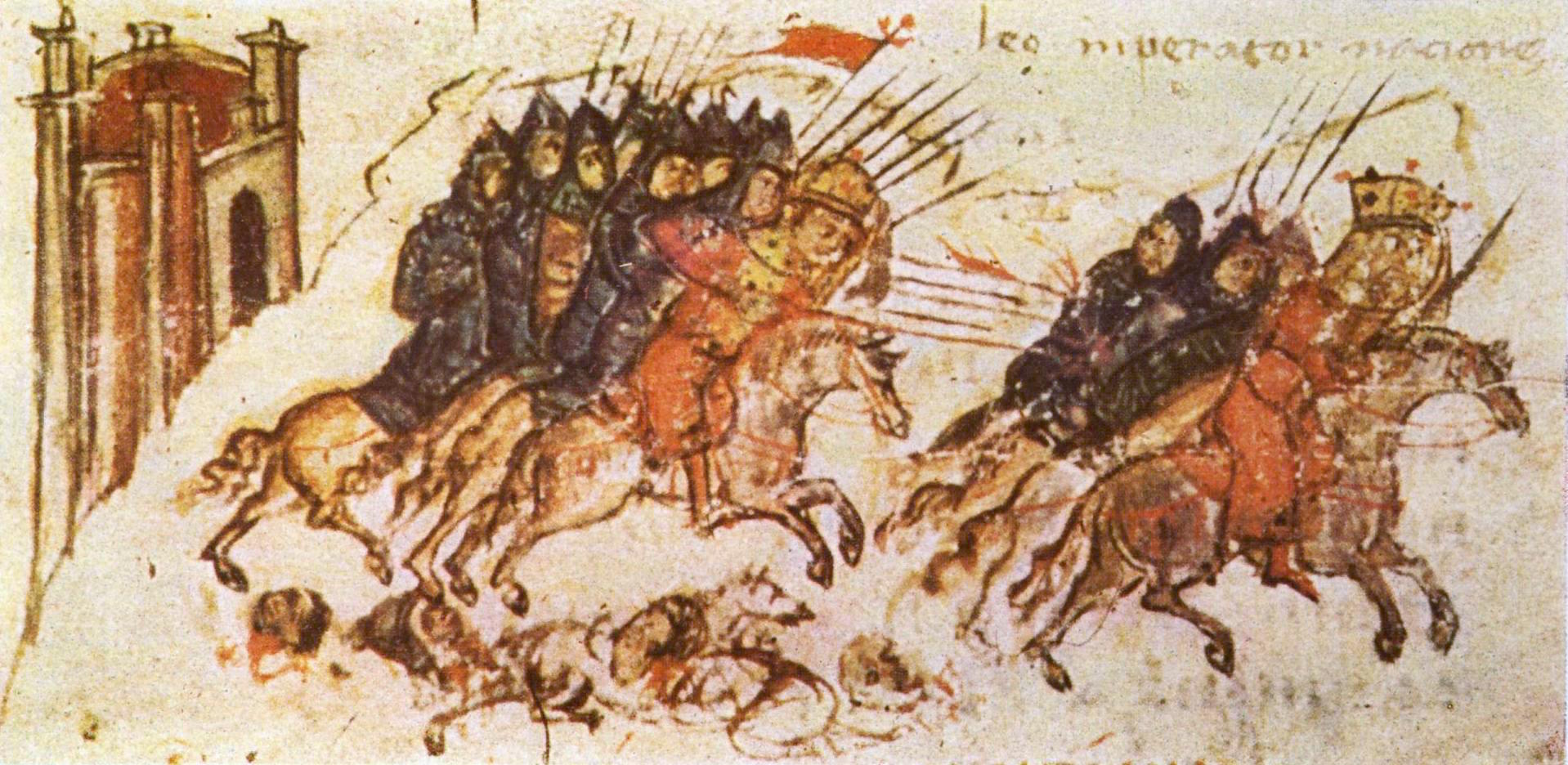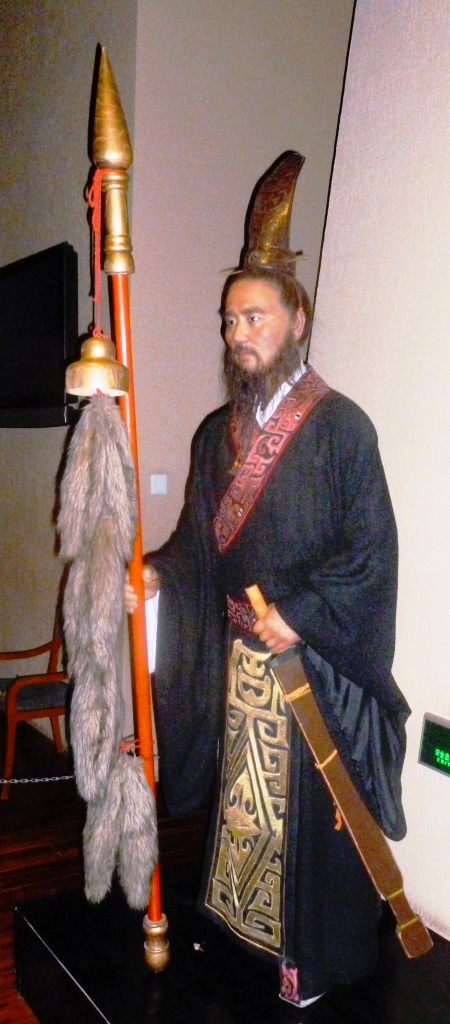|
Vokil
Uokil, or Vokil, was a name of Bulgar dynastic clan listed in the '' Nominalia of the Bulgarian khans''. The first listed in Nominalia was Kormisosh (r. 737–754) and the last was Umor (r. 766). Theories regarding origins Kazakh Turkologist Yury Zuev had drawn attention to circumstantial evidence suggesting links between the Vokil and various Central Asian peoples, during antiquity and the early Middle Ages. The peoples concerned include: * the ''Hūjiē'' (呼揭) or ''Wūjiē'' (烏揭), whom Zuev believed to have been an offshoot of the Yuezhi or Wusun; * the ''Xījiē'' (奚結), a Tiele tribe. * the ''Augaloi'' of the Transoxiana region beyond the Oxus, among the Indo-European-speaking '' Tocharii''; However, such theories are controversial and cannot be all true. Conclusive evidence proving or disproving them has never been presented and there is no consensus amongst scholars on whether or not such links exist. Yuezhi and Wusun Yuezhi and Wusun are Chinese exon ... [...More Info...] [...Related Items...] OR: [Wikipedia] [Google] [Baidu] |
Kormisosh
Kormisosh ( bg, Кормисош) was a ruler of Bulgaria during the 8th century. The Namelist of Bulgarian Rulers states that he belonged to the Ukil (or Vokil) clan and ruled for 17 years. According to the chronology developed by Moskov, Kormisosh would have reigned from 737 to 754. Other chronologies place his reign in 753–756, but cannot be reconciled with the testimony of the "Namelist" (or would require us to assume a long period of co-regency). The "Namelist" stresses the fact that the accession of Kormisosh represents a change of dynasty, but it remains unclear whether that was done through violence. The reign of Kormisosh inaugurated a prolonged period of war with the Byzantine Empire. The Byzantine Emperor Constantine V Kopronymos had begun to fortify the frontier and started settling Armenians and Syrians in Byzantine Thrace. In response Kormisosh demanded the payment of tribute, perhaps constituting an increase in the traditional payments. Rebuffed, Kormisosh r ... [...More Info...] [...Related Items...] OR: [Wikipedia] [Google] [Baidu] |
Bulgars
The Bulgars (also Bulghars, Bulgari, Bolgars, Bolghars, Bolgari, Proto-Bulgarians) were Turkic semi-nomadic warrior tribes that flourished in the Pontic–Caspian steppe and the Volga region during the 7th century. They became known as nomadic equestrians in the Volga-Ural region, but some researchers say that their ethnic roots can be traced to Central Asia. During their westward migration across the Eurasian steppe, the Bulgar tribes absorbed other tribal groups and cultural influences in a process of ethnogenesis, including Iranian, Finnic and Hunnic tribes. Modern genetic research on Central Asian Turkic people and ethnic groups related to the Bulgars points to an affiliation with Western Eurasian populations. The Bulgars spoke a Turkic language, i.e. Bulgar language of Oghuric branch. They preserved the military titles, organization and customs of Eurasian steppes, as well as pagan shamanism and belief in the sky deity Tangra. The Bulgars became semi-sedentary du ... [...More Info...] [...Related Items...] OR: [Wikipedia] [Google] [Baidu] |
Exonym
An endonym (from Greek: , 'inner' + , 'name'; also known as autonym) is a common, ''native'' name for a geographical place, group of people, individual person, language or dialect, meaning that it is used inside that particular place, group, or linguistic community in question; it is their self-designated name for themselves, their homeland, or their language. An exonym (from Greek: , 'outer' + , 'name'; also known as xenonym) is an established, ''non-native'' name for a geographical place, group of people, individual person, language or dialect, meaning that it is used only outside that particular place, group, or linguistic community. Exonyms exist not only for historico-geographical reasons but also in consideration of difficulties when pronouncing foreign words. For instance, is the endonym for the country that is also known by the exonym ''Germany'' in English, in Spanish and in French. Naming and etymology The terms ''autonym'', ''endonym'', ''exonym'' and ''xen ... [...More Info...] [...Related Items...] OR: [Wikipedia] [Google] [Baidu] |
Zhizhi Chanyu
Zhizhi or Chi-Chi (, from Old Chinese (58 BCE): *''tśit-kie'' < *''tit-ke'';Schuessler 2014, p. 277 died 36 BCE), also known as Jzh-jzh, was a of the Xiongnu Empire at the time of the first Xiongnu civil war, who held the north and west in contention with his younger brother Huhanye who held the south. His original name in Chinese transcription was Luandi Hutuwusi (), i.e. one of the Worthy Princes of the East (of the [...More Info...] [...Related Items...] OR: [Wikipedia] [Google] [Baidu] |
Hanshu
The ''Book of Han'' or ''History of the Former Han'' (Qián Hàn Shū,《前汉书》) is a history of China finished in 111AD, covering the Western, or Former Han dynasty from the first emperor in 206 BCE to the fall of Wang Mang in 23 CE. It is also called the ''Book of Former Han''. The work was composed by Ban Gu (32–92 CE), an Eastern Han court official, with the help of his sister Ban Zhao, continuing the work of their father, Ban Biao. They modeled their work on the ''Records of the Grand Historian'', a cross-dynastic general history, but theirs was the first in this annals-biography form to cover a single dynasty. It is the best source, sometimes the only one, for many topics such as literature in this period. A second work, the ''Book of the Later Han'' covers the Eastern Han period from 25 to 220, and was composed in the fifth century by Fan Ye (398–445). Contents This history developed from a continuation of Sima Qian's ''Records of the Grand Historian'' ... [...More Info...] [...Related Items...] OR: [Wikipedia] [Google] [Baidu] |
Sogdia
Sogdia ( Sogdian: ) or Sogdiana was an ancient Iranian civilization between the Amu Darya and the Syr Darya, and in present-day Uzbekistan, Turkmenistan, Tajikistan, Kazakhstan, and Kyrgyzstan. Sogdiana was also a province of the Achaemenid Empire, and listed on the Behistun Inscription of Darius the Great. Sogdiana was first conquered by Cyrus the Great, the founder of the Achaemenid Empire, and then was annexed by the Macedonian ruler Alexander the Great in 328 BC. It would continue to change hands under the Seleucid Empire, the Greco-Bactrian Kingdom, the Kushan Empire, the Sasanian Empire, the Hephthalite Empire, the Western Turkic Khaganate and the Muslim conquest of Transoxiana. The Sogdian city-states, although never politically united, were centered on the city of Samarkand. Sogdian, an Eastern Iranian language, is no longer spoken, but a descendant of one of its dialects, Yaghnobi, is still spoken by the Yaghnobis of Tajikistan. It was widely spoken in Centr ... [...More Info...] [...Related Items...] OR: [Wikipedia] [Google] [Baidu] |
Ili River
The Ili ( ug, ئىلى دەرياسى, Ili deryasi, Ili dəryasi, 6=Или Дәряси; kk, Ile, ; russian: Или; zh, c=伊犁河, p=Yīlí Hé, dng, Йили хә, Xiao'erjing: اِلِ حْ; mn, Ил, literally "Bareness") is a river situated in Northwest China and Southeastern Kazakhstan. It flows from the Ili Kazakh Autonomous Prefecture of the Xinjiang Uighur Autonomous Region to the Almaty Region in Kazakhstan. It is long (including its source river Tekes),Или of which is in Kazakhstan. The river originates from the Tekes and Künes rivers in Eastern [...More Info...] [...Related Items...] OR: [Wikipedia] [Google] [Baidu] |
Zhang Qian
Zhang Qian (; died c. 114) was a Chinese official and diplomat who served as an imperial envoy to the world outside of China in the late 2nd century BC during the Han dynasty. He was one of the first official diplomats to bring back valuable information about Central Asia, including the Greco-Bactrian remains of the Macedonian Empire as well as the Parthian Empire, to the Han dynasty imperial court, then ruled by Emperor Wu of Han. He played an important pioneering role for the future Chinese conquest of lands west of Xinjiang, including swaths of Central Asia and even lands south of the Hindu Kush (see Protectorate of the Western Regions). This trip created the Silk Road that marked the beginning of globalization between the countries in the east and west. Zhang Qian's travel was commissioned by Emperor Wu with the major goal of initiating transcontinental trade in the Silk Road, as well as create political protectorates by securing allies. His missions opened trade routes ... [...More Info...] [...Related Items...] OR: [Wikipedia] [Google] [Baidu] |
Göktürks
The Göktürks, Celestial Turks or Blue Turks ( otk, 𐱅𐰇𐰼𐰰:𐰉𐰆𐰑𐰣, Türük Bodun; ; ) were a nomadic confederation of Turkic peoples in medieval Inner Asia. The Göktürks, under the leadership of Bumin Qaghan (d. 552) and his sons, succeeded the Rouran Khaganate as the main power in the region and established the First Turkic Khaganate, one of several nomadic dynasties that would shape the future geolocation, culture, and dominant beliefs of Turkic peoples. Etymology Origin Strictly speaking, the common name "Göktürk" emerged from the misreading of the word "Kök" meaning Ashina, ruling clan of the historical ethnic group's endonym: which was attested as otk, 𐱅𐰇𐰼𐰰, Türük, labels=no ''trwkc'', ''trukč''; Khotanese Saka ''Ttūrka''/''Ttrūka'', Ruanruan ''to̤ro̤x''/''türǖg'' and Old Tibetan ''Drugu''. Definition According to Chinese sources, Tūjué meant "combat helmet" (), reportedly because the shape of the Altai Mountains, w ... [...More Info...] [...Related Items...] OR: [Wikipedia] [Google] [Baidu] |
Ashina Tribe
The Ashina (; Middle Chinese: (Guangyun) ), were a Turkic speaking tribe and the ruling dynasty of the Göktürks. This clan rose to prominence in the mid-6th century when the leader, Bumin Qaghan, revolted against the Rouran Khaganate. The two main branches of the family, one descended from Bumin and the other from his brother Istämi, ruled over the eastern and western parts of the Göktürk confederation, respectively. Origin Primary Chinese sources ascribed different origins to the Ashina tribe. Ashina were first attested to 439, as reported by the ''Book of Sui'': on the 18th day of the 10th month, the Tuoba ruler Emperor Taiwu of Northern Wei overthrew Juqu Mujian of the Northern Liang in eastern Gansu,Wei Zheng et al., ''Book of Sui'', Vol. 84. and 500 Ashina families fled northwest to the Rouran Khaganate near Gaochang. According to the ''Book of Zhou'', ''History of the Northern Dynasties'', and New Book of Tang, the Ashina clan was a component of the Xiongnu confede ... [...More Info...] [...Related Items...] OR: [Wikipedia] [Google] [Baidu] |
Modu Chanyu
Modu, Maodun, Modun (, from Old Chinese (220 B.C.E.): *''mouᴴ-tuən'' or *''mək-tuən'', c. 234 – c. 174 BCE) was the son of Touman and the founder of the empire of the Xiongnu. He came to power by ordering his men to kill his father in 209 BCE. Modu ruled from 209 BCE to 174 BCE. He was a military leader under his father Touman and later Chanyu of the Xiongnu Empire, based on the Mongolian Plateau. He secured the throne and established a powerful Xiongnu Empire by successfully unifying the tribes of the Mongolian-Manchurian grassland in response to the loss of Xiongnu pasture lands to invading Qin forces commanded by Meng Tian in 215 BCE. While Modu rode and then furthered the wave of militarization and effectively centralized Xiongnu power, the Qin quickly fell into disarray with the death of the first emperor in 210 BCE, leaving Modu a free hand to expand his Xiongnu Empire into one of the largest of his time. The eastern border stretched as far as the Liao River, the ... [...More Info...] [...Related Items...] OR: [Wikipedia] [Google] [Baidu] |
Huns
The Huns were a nomadic people who lived in Central Asia, the Caucasus, and Eastern Europe between the 4th and 6th century AD. According to European tradition, they were first reported living east of the Volga River, in an area that was part of Scythia at the time; the Huns' arrival is associated with the migration westward of an Iranian people, the Alans. By 370 AD, the Huns had arrived on the Volga, and by 430, they had established a vast, if short-lived, dominion in Europe, conquering the Goths and many other Germanic peoples living outside of Roman borders and causing many others to flee into Roman territory. The Huns, especially under their King Attila, made frequent and devastating raids into the Eastern Roman Empire. In 451, they invaded the Western Roman province of Gaul, where they fought a combined army of Romans and Visigoths at the Battle of the Catalaunian Fields, and in 452, they invaded Italy. After the death of Attila in 453, the Huns ceased to be a major t ... [...More Info...] [...Related Items...] OR: [Wikipedia] [Google] [Baidu] |







